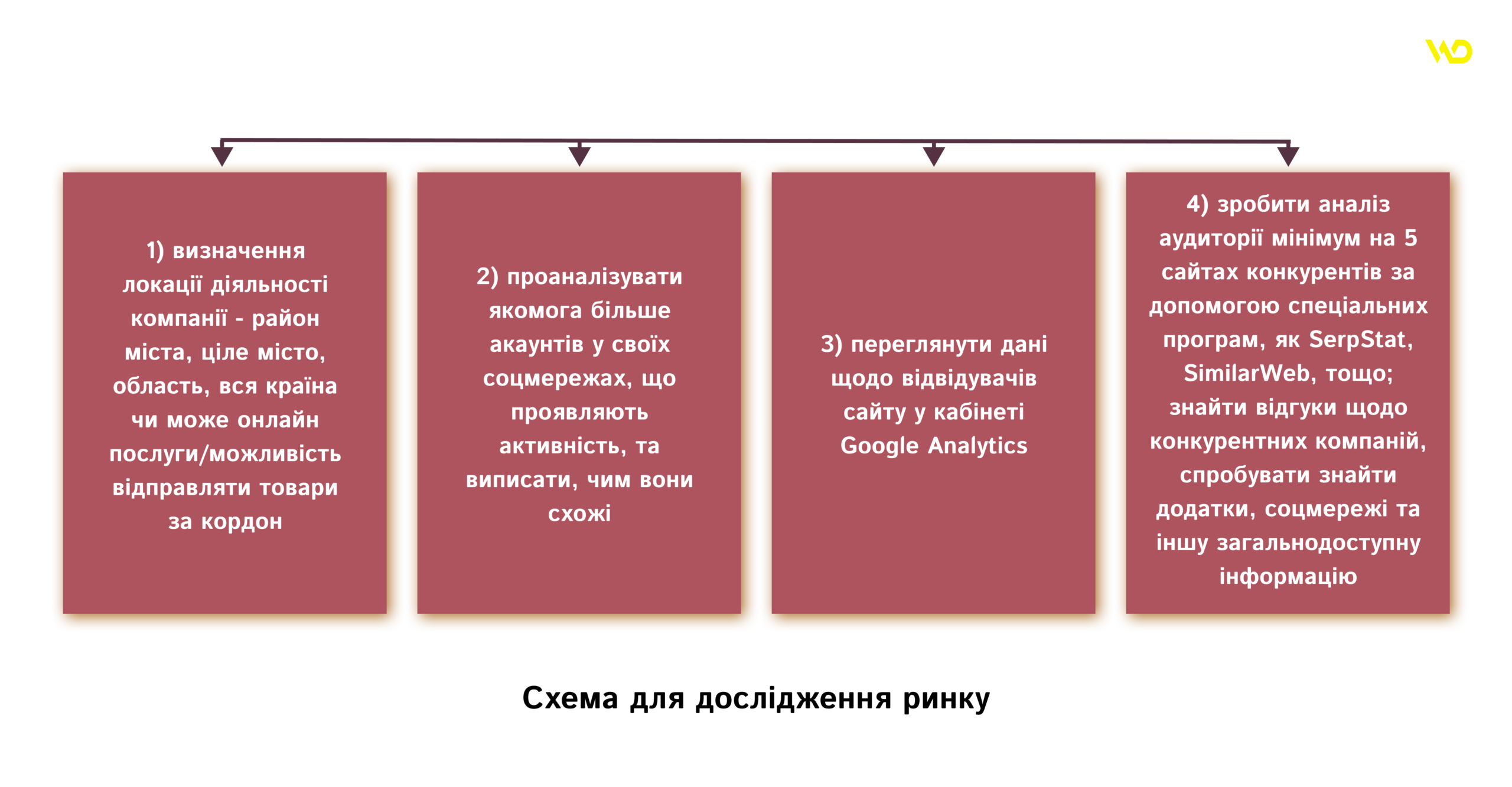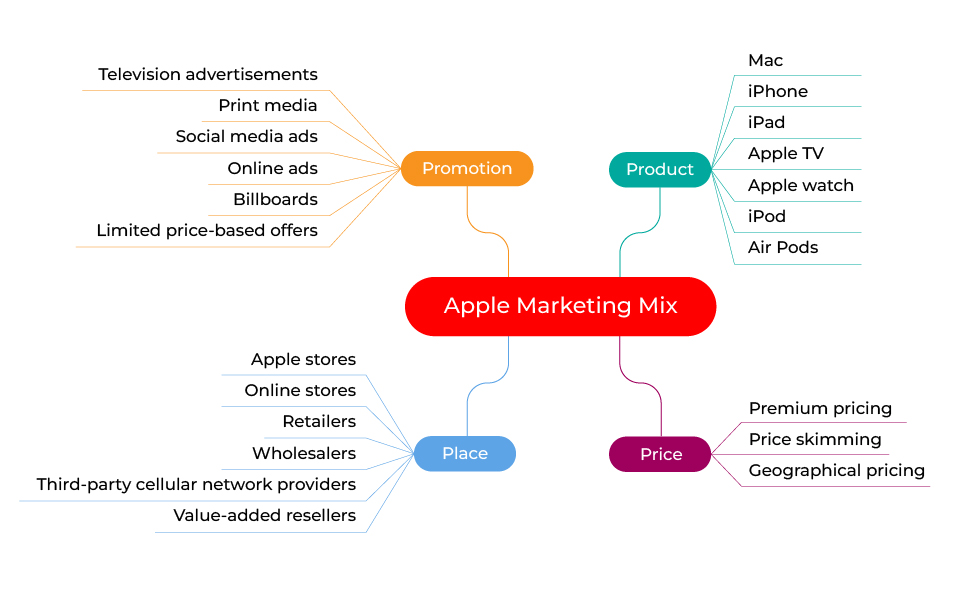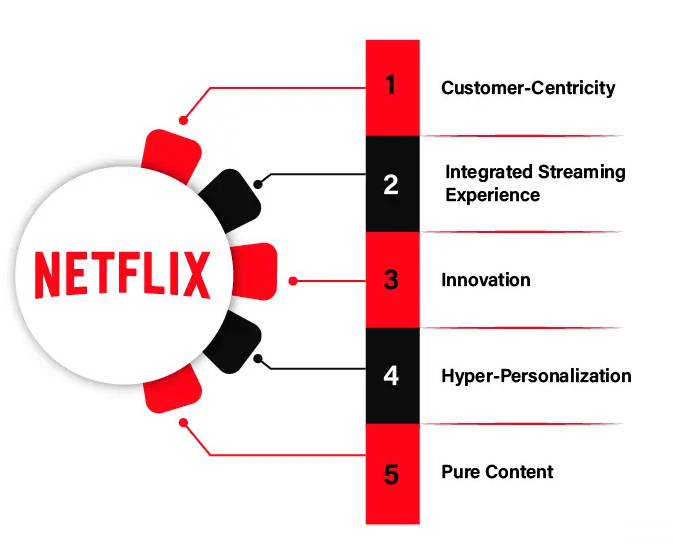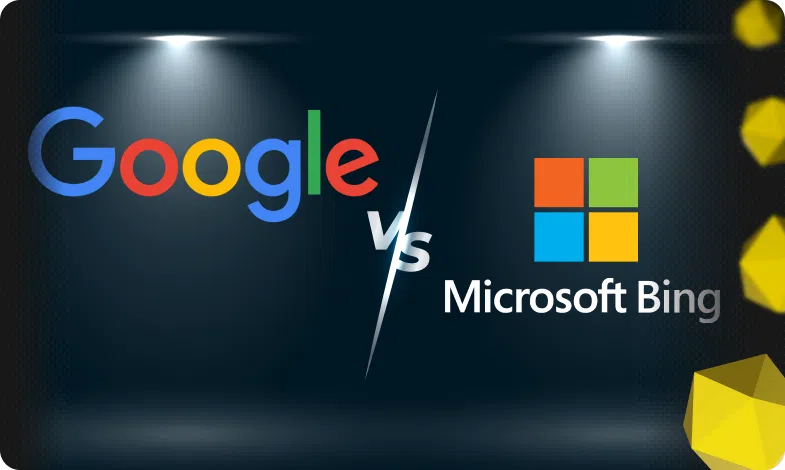Content of the article
- /01 What is a marketing strategy?
- /02 Why you need a marketing strategy?
- /03 Benefits of a marketing strategy
- /04 What is the difference between a marketing strategy and a plan?
- /05 Types of marketing strategies
- /06 Step-by-step creation of a marketing strategy
- /07 Peculiarities of marketing strategy implementation and control
- /08 The price of a marketing strategy
- /09 Common mistakes
- /10 Examples of marketing strategies
- /11 Conclusions

Every business is unique and unrepeatable in its own way. Even if it seems that the niche, subject matter, products and other nuances are similar, companies are always different. This means that their path to success will be different. A quality business promotion requires a step-by-step plan of action, a certain tactic for achieving goals.

This is the marketing strategy, which is usually created by experienced marketing specialists to popularize the brand with the optimal allocation of the budget for promotion, which is beneficial for business owners.
In the article we will consider what a marketing strategy is, what types there are and how to make a unique plan just for your company.
What is a marketing strategy?
A marketing strategy is a definite plan of action based on the overall business strategy, in which the future results of advertising campaigns and other ways of converting site visitors into real customers are spelled out and calculated. The strategy includes items with a list of long-term and short-term goals that will lead to effective, rapid realization of the business plan.
Important! Advertising strategy is a document in which all the information is set out clearly, concisely, specifically. It has one main long-term goal and is logically divided into the necessary number of subparagraphs for a better understanding of the sequence of processes.
Marketing strategy development includes detailed market analysis, competitor research, the features of the client’s products (and necessarily competitive samples), and the uniqueness of the business. There are a lot of stages in such a strategy, which are closely related to each other, but they cannot always be static. The market is changing, and to keep the coverage at a high level and attract the audience, you need to constantly monitor these changes and adjust the components of the marketing strategy.
Advertising strategy implemented on the Internet to promote business, most often includes the development of a one-page website (Landing Page) with a certain functionality, promotion through context (PPC), SEO, content and e-mail marketing, social networks. Interim results are regularly monitored in metrics systems and, if indicators deteriorate or there is no growth, changes are made to the plan.
Why you need a marketing strategy?
A strategy is a kind of manual, guided by which specialists go step by step and fulfill their part of the tasks for the quality promotion of their client’s goods or services and their business on the market. It is thanks to it that the realization of goals becomes easier: it is easier to retain existing customers and attract new ones.
When developing a marketing strategy, the product, its price, place in the market, and ways of promotion are taken as a basis. Let’s consider the goals that a business can achieve with a well-developed marketing strategy.

The main one is to get ahead of the competition and achieve a steady stream of customers by understanding their needs. The following objectives are as follows:
- Detailed analysis of the target audience – the more accurately it is understood who the end customer is, the faster sales and brand recognition and popularity will increase. In the marketing strategy deep analysis of TA is one of the first and main tasks, because this knowledge helps to form a further promotion plan taking into account the needs of TA.
- Determination of competitive advantages, brand positioning and brand uniqueness. This includes researching a product identical to yours on the market, which gives you the opportunity to set a fair price according to quality, excellent features and the like. Analytics will help you stand out among your competitors and win the attention of more consumers.
- Accelerating brand development is another important goal of creating a marketing strategy. Its achievement is possible if there are unique elements that are usually collected in a brandbook: logo, slogan, basic color palette, typography, Tone of Voice brand, branded graphic elements. Visuals influence brand positioning, so they are an integral part of the development process.
- An increase in the number of sales and income is guaranteed thanks to a well-developed marketing strategy and a detailed marketing plan. The general Internet strategy is prescribed with options for business development at once, but marketing specialists must adjust it. This is for the sake of constant business expansion, attracting new customers. Improvement can be directly related to products, service, price reductions and other things.
- Entering new markets is one of the options for scaling the business. Today it is critical if a business owner has a desire to grow. For example, opening new stores, branches, outlets, offices, etc. – in new areas of the country and abroad. The strategy should note in the strategy the possible ways of such scaling and in the plan the necessary steps to achieve this.
In addition, a marketing strategy helps to allocate the available budget for brand promotion more intelligently, i.e., to spend resources more effectively to achieve the goal set out in the business plan.
Early creation of marketing strategy – a very profitable investment in business development, which is sure to pay for itself quickly enough.
Next, let’s look at why else business owners invest time and money in the creation of a marketing strategy by marketing specialists.
Benefits of a marketing strategy
The presence of an advertising strategy ensures that all the prescribed steps will be aimed only at achieving the ultimate goal, which means that the budget will be used in the most targeted and effective way. In addition, you will not waste time on incomprehensible actions that will not be of any benefit to the business.
Apart from these two important benefits, an effective marketing strategy has the following pros for the brand:
- Understanding the problems and desires of potential customers and the ability to close those issues;
- Creating or improving existing products so that they stand out from competitors;
- Having logical, consistent and relevant content for consumers across all channels for promotion;
- Creating advertising campaigns that will pinpoint the TA; competent campaigns guarantee an increase in conversions and sales;
- The ability to get clear results and, comparing with the original strategy, to understand the usefulness of the work done on the way to the goal;
- Profit maximization.
There are enough advantages, so business owners who want to have a really financially profitable business that is constantly growing, do not neglect a marketing strategy and a marketing plan to it. A strategy and a plan are different, so let’s break down what exactly they are.
What is the difference between a marketing strategy and a plan?
Above, we mentioned what a marketing strategy is and that there is a separate concept of a marketing plan. These concepts are important for business promotion, but their definition is slightly different – they help to achieve different goals.
Marketing strategy includes a general vision of how to achieve the desired result and necessarily includes the analysis of the target audience, market and competitors, brand positioning, possible channels of promotion. We have already considered this issue in more detail above, so let’s move on to the question of what a marketing plan is and how exactly it differs from the strategy.
A marketing plan includes detailed steps, realizing which it becomes possible to achieve global business goals. The plan outlines data on future processes, tools, tactics to achieve the goals spelled out in the strategy.
Why you need a marketing plan for your business?

For example, Tatiana, a dressmaker who is on fire for her business, decided to finally conduct a global study because the income she receives is much less than desired. The purpose of the research was to identify her ideal customers. She can sew a lot of different things and she has a daughter who does gymnastics. Tatiana occasionally sews competition leotards for her daughter. After estimating the size of the audience that can be reached and making some predictions, the dressmaker decides to choose this direction for further movement.
She contacts a marketing specialist who creates a marketing strategy for her. This strategy includes outreach to potential customers, promoting the idea that the dressmaker has a deep understanding of gymnastics competition and the ability to tailor quality, comfortable, beautiful costumes.
After agreeing on the main goals and capabilities to produce goods, the marketing specialist develops a marketing plan, where he or she already describes the sequential steps to realize the strategy. Of course, the available budget for promotion is taken into account and as a result of detailed analysis the channels of brand promotion are determined:
- Instagram, Facebook – maintaining pages for popularization and brand awareness of gymnastics leotards and promotion of the dressmaker’s personal brand;
- creation of an online store to sell costumes for performances and ordinary training, what is available; promotion with the help of SEO optimization of the site and thematic articles in the blog;
- messengers: periodic mailing of interesting offers, news, etc. to the existing customer base to encourage repeat purchases;
- paid advertising to attract new customers in Google Ads, launching targeted advertising in Instagram and Facebook.
Next, the marketing plan prescribes specific actions necessary to realize the described ideas. For example:
- find freelancers in the following niches: SMM specialist for extensive advice on competent page management, photographer and videographer for creating advertising materials, SEO-copywriter and content manager for writing and publishing content in the online store;
- create templates for messages to be sent out in messengers;
- find PPC advertising experts to help set up and manage campaigns on various platforms.
Looking for marketing specialists?
Entrust your business promotion to WEDEX! We will provide a full range of Internet marketing services to increase your profits. Work with professionals who understand your goals!
So, from the example we can see that strategy and plan are different but equally important elements for quality brand promotion. And it is important to pay enough attention to every detail from the very beginning, because it is the details that matter on the way to great success.
Let’s review and analyze the different classifications of marketing strategies.
Types of marketing strategies
Marketing specialist distinguish 4 main groups with their own subgroups that contribute to business growth. There can be many more types, depending on the way of classification, but now – about the main ones.
Global marketing strategies
These are large-scale strategies focused on:
- business promotion outside your country (entering foreign markets, brand popularization);
- market segmentation to sell products to customers from each segment separately;
- reorganization of the company’s activities so that the product and all processes comply with uniform market standards;
- expansion of the product range;
- cooperation with business partners for mutually beneficial cooperation.
Basic marketing strategies
Focuses on evaluating product benefits and opportunities for market leadership. The ways to maximize revenue and get a large number of satisfied customers are as follows:
- lower prices due to the reduction of all costs necessary for the production of goods. Compared to competitors, such a business will always be on the plus side;
- differentiation – selling unique goods or services that are «definitely not available anywhere else, only here». For example, a unique technology of production of candles with an inscription, which is visible only when the candle itself is burning or gift wrapping, when the main gift is packed in several layers, each of which has some symbolic pleasant surprise. It is important to note that such products require more expenditure on advertising campaigns than primitive, everyday ones, but they also attract more attention and improve the brand image;
- concentration on sales exclusively for one segment or one group of the target audience.
Growth strategies
The name speaks for itself – the core of the strategy is to increase sales and profits, which is achieved by:
- intensive growth due to active work with the company’s resource base;
- search for and activation of hidden opportunities that help to attract new segments of TA, improve the product, etc.;
- integration of partner and competitive efforts into advertising campaigns;
- expanding the range of goods or services, provided that the income is lower than desired and business development is much slower, despite forecasts.
Competitive marketing strategies
This is a type of strategy that deals with the competitiveness of a company. Such a plan may include:
- retention of leadership positions thanks to new technologies and solutions that will allow you to remain a leader in the niche;
- constant search for new customers, promotion of the website and other selected channels;
- demarketing – reduction of market share;
- duplication of the leader’s actions in the niche to get the same results;
- niching – working only on one market segment, without the desire to get large coverage.
So, we have a certain theoretical basis, so let’s move on to practice – the stages and peculiarities of creating a marketing strategy.
Step-by-step creation of a marketing strategy
We mentioned above that only a marketing specialist can make a competent business promotion strategy. But it is better if a team will work on the creation, because it is easier to break down the whole strategy into separate tasks, for which a separate person will be assigned. So, at the output it is easier to get the best result.
Therefore, let’s move on to step-by-step actions, which, in the classic version, will definitely work. But take into account that each business is different, so the components may vary.
STEP 1. Setting measurable objectives.
Defining as clear goals as possible allows you to see in the long term whether you are on the right track in promoting your brand through, for example, a website or social media. There can be several goals and the prospects for each should be calculated by a marketing specialist.
To set goals, we recommend using the SMART system.

In line with this, the objective is:
- specific – have a precise formulation of what the person needs (for example, instead of «improve the functionality of the mobile version of the site» – «conduct analytics, compare traffic, bounce rates, completed transactions»;
- measurable – with indicators that will be used to evaluate effectiveness (not «make a lot of money», but «make $3500 per month»);
- achievable – before setting this goal, make sure that it is really possible to achieve it, given the available budget, time and tools to achieve it (instead of «start a blog» – «write one interesting Instagram post every day»);
- сurrent or relevant – current goals should be aligned with broader goals that are appropriate for the specific period (e.g., «increase the amount of quality inbound traffic» rather than «increase conversion rates»).
STEP 2. Market research and target audience analysis.
Market analysis, including competitors, gives an overall view of the market you are planning to enter or have already scaled. Market research also helps you understand who your target audience is and how to segment it.
It is best to determine the portrait of TA before choosing promotion channels with the help of surveys and get a clear picture of age, gender, needs, pains, preferences and other features of TA. However, this method of studying the audience is possible only if your company has been on the market for more than a year.
For market research you can use the following scheme:

This plan will help you get a clear understanding of who are the current customers and who are the desired customers. This way you will see if all the efforts and investments are worth the current result.
STEP 3. SWOT analysis.
For internal business analysis, marketing professionals use SWOT analysis, which has four categories.

- strengths – these are the advantages that the company has over its competitors;
- weaknesses – weaknesses, things that should be paid special attention to and worked on, improved;
- opportunities – something special that the brand can offer to its customer, for example, the opportunity to receive information about big discounts on certain products first. It is worth monitoring new trends, trends in the niche, to follow various changes in society, so that promotion efforts are not in vain;
- dangers – threats to the business, obstacles and problems you may encounter.
To get the most truthful result possible, you need to look at the product «from the outside», as a consumer, not a salesperson.
STEP 4. Brand positioning and key messages.
To get people talking about you, you need to have a twist. The overall image of the company, the values, the meanings you want to convey to the customer – all this must be thought out down to the details.
Tone of Voice (brand voice) – one of the parameters that can make a company stand out among competitors. It is a memorable way of communicating with the audience, which attracts special attention. When creating the Tone of Voice, attention is paid to the words, phrases, slogans that the company will use in everyday communication with the TA.
STEP 5. Marketing channels and tactics.
Choosing the right marketing channels for promotion is critical. Any campaign can produce poor results if you choose the wrong places to broadcast your ads.
There are 3 broad categories of channels through which ads can be shown:

If your company isn’t newly established, use Google Analytics and review the “Traffic Attraction” report to see what works best for you.
STEP 6. Budget and timeline.
Budget allocation starts with the most important channels and actions. Other funds are directed to other areas.
For example:
You are a marketing specialist tasked with allocating a budget to promote a pizzeria. You need to promote the service in Instagram, TikTok and with the help of the website. Having conducted analytics, we put the channels in order of priority and allocate a larger budget:
- photographer, videographer to shoot quality sales content or SMM specialist with these functions;
- a web designer to work on the website;
- copywriter;
- launching advertising campaigns – targeting and contextual to get quick results in the form of constant incoming traffic.
Remember that it is important to set deadlines for all phases of the work to get results within the time frame agreed upon with the client.
STEP 7. Monitoring progress.
Monitoring interim results is the next step, which helps to understand how well the whole strategy is working and what changes need to be made to make improvements. For example, remove unprofitable products from the assortment or add a new promotion channel.
You can use Google Analytics, Google Search Console, Google Ads or Facebook Pixel to analyze the channels and the chosen tactics.
Peculiarities of marketing strategy implementation and control
Selecting tactics and tools, launching campaigns and other types of advertising is only the middle of the process. But it is very important, just like the previous and subsequent stage. To make implementation and control as comfortable as possible, you need to:

Even if everything seems to be going well, the advertising campaigns are working, the amount of interested incoming traffic is sufficient – still be careful. All stages are very important, so in order not to waste your budget on nothing, constantly review the compliance of intermediate results with the goals.
The price of a marketing strategy
The cost of developing a marketing strategy depends on the size of the company, the desired goals and the complexity of achieving them, the level of competition, product features, and even the required speed of realizing project goals. That is why there is no single price. It can range from $2000 to tens of thousands and is always calculated individually by a specialist.
Common mistakes
There are factors that can derail all progress. At any stage. So, what to avoid:
- Blindly copying the experience of other companies. Remember that every business is unique and you need to find your own features and ways to show them to your target audience, not copy what has already been done. No one likes copies.
- Promotion only through one channel. This trivializes the coverage and does not reveal all the possible potential for promotion.
- Ignoring regular analysis of results. Strategy is not static, it must be constantly changed for the sake of strengthening weaknesses, stable improvement of the results of advertising campaigns and investment in general.
- Insufficient market and target audience research at the stage of strategy preparation.
If you are not a marketing expert, don’t try to do brand promotion on your own. This can be the biggest mistake and can result in the loss of a considerable amount of budget.
Examples of marketing strategies
Let’s take a few well-known brands as an example. Of course, your company will be very different from them, but these sales giants are worth holding your attention. Perhaps it is with them that you will see the nuances that your promotion strategy has been missing.
Apple
This company makes premium products that people from all over the world want. Apple’s image is created in such a way that consumers look forward to every new product because it will be of high quality, comfortable, stylish and will indicate high status.

The company uses a lot of different channels for promotion, so there is no one who does not know the name of the brand. From the interesting – Apple has a strategy of differentiation – the owner of the company together with specialists for a very long time built exactly such a perception to the products, as it is today. And now they are at the top of their game.
Netflix
Netflix is a special service that has many fans. Their promotion strategy is based on the peculiarities of each client. This is what they broadcast when launching advertising campaigns in various channels: from e-mail marketing to targeting in social networks and media advertising. Netflix is entertainment, comfort and a personalized approach to each user.

The company is constantly developing and creating new products, which certainly pleases visitors to the resource. A special feature – when Netflix presents its brand in a new country, shows about this new country appear on the site, and some of the video content is translated into the language of the new country.
Conclusions
Marketing strategy is necessary to achieve big business goals. For its development it is necessary to analyze the market, competitors, target audience, make a SWOT-analysis and form clear objectives for a specific period. All this will help to competently distribute the available advertising budget and achieve the goals in the specified time without loss of investment. Monitoring and analyzing the results are important elements in brand promotion, because thanks to this it is possible to correctly adjust the strategy and improve the results.






 06/01/2025
06/01/2025  3215
3215



